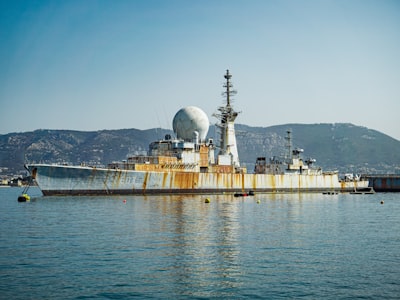Overview
Directed Energy Weapons (DEWs) are systems that emit focused energy in the form of laser, microwave, or particle beams to incapacitate, damage, or destroy enemy equipment, personnel, or infrastructure. In recent years, the use of lasers—one form of DEW—has become increasingly prominent in naval operations, particularly for targeting, surveillance disruption, or as non-lethal deterrents.
Technological Principles
A directed energy weapon employs highly focused electromagnetic energy, most commonly as a laser beam. These systems may be used to:
- Temporarily blind or disable optical sensors and personnel
- Damage electronic equipment or guidance systems
- Disrupt aircraft operation
Military-grade lasers can be classified by their output power, wavelength, and intended effects (blinding, dazzling, or burning). Advances in miniaturization, power generation, and beam control have enabled their mounting on naval vessels and aircraft.
Applications in Naval Operations
Navies worldwide have explored, demonstrated, or deployed DEWs for various applications, such as:
- Defense against UAVs (unmanned aerial vehicles) and small boats
- Countermeasures against surveillance and targeting systems
- Non-lethal means of area denial or warning
- Anti-piracy and maritime security missions
The Red Sea and Gulf of Aden, due to piracy and strategic maritime interests, have been focal points for international naval deployments, including the use of advanced technologies like DEWs.
Legal and Ethical Considerations
International law, particularly the Protocol on Blinding Laser Weapons (1995), prohibits the use of lasers designed to cause permanent blindness. However, systems intended solely for "dazzling" or temporary interference are not explicitly banned, resulting in ongoing debates regarding intent, proportionality, and rules of engagement.
Notable Incidents
Several countries, including China, the United States, Australia, and the Philippines, have reported incidents involving military laser use aimed at aircraft or vessels, prompting diplomatic protests and discussions on maritime conduct and technology escalation in contested regions.
Future Prospects
As technology advances, DEWs are expected to become more prevalent in naval and airborne operations for both defensive and offensive roles. Issues of attribution, escalation, countermeasures, and arms control are likely to influence their integration and regulation in international military affairs.

Comments
No comments yet. Be the first to comment!